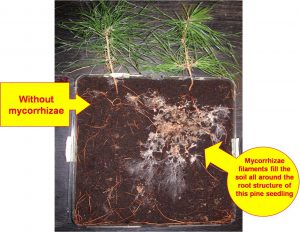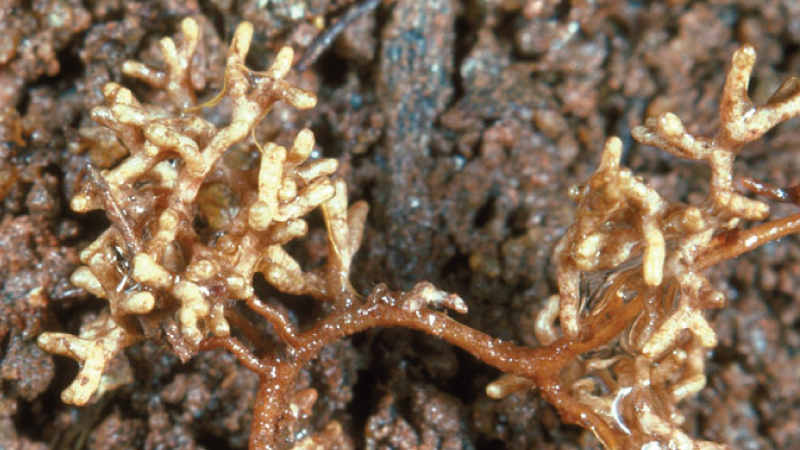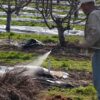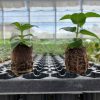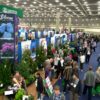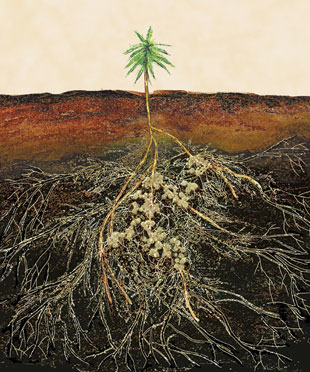
It All Started with Ectos
Dr. Mike Amaranthus’s introduction to success working with mycorrhizae started when he was the lead scientist working for the US Forest Service in Southern Oregon. He and his research team were looking to find a “fix” to increase the survivability of forestry seedling in areas that had been replanted after they had been logged. His longtime mentor suggested he start to work with mycorrhizae. Through Dr. Mike’s diligent research, he was able to show proof of concept of using ectomycorrhizae with forestry seedlings to improve transplant success. Dr. Mike tried to get this new technology to be accepted by the local forestry nurseries, however, at that time there were no commercial ectomycorrhizae sources available. So, in 1995, Dr. Mike decided to leave the Forest Service and start his own company. Mycorrhizal Applications was founded by Dr. Mike and Eileen Amaranthus, with a focus on producing ectomycorrhizal slurries for use in forest restoration. Mycorrhizal Applications’ first product was called BioGrow. For the first four years of Mycorrhizal Applications’ existence, ectomycorrhizae was all the company sold. In these early days, all of the products were liquid and made to order.
An Important Group of Plants
Industry experts estimate ectomycorrhizal plants make up between 5 and 10% of all plant species. That is a small number compared with the 80-85% of plant species that are endomycorrhizal, but the number is still significant in the number of species, and more importantly the number of plants on this earth. The list of ecto plants includes most conifers and hardwood trees and several shrubs/perennials. If you are a Nursery Grower, Landscaper, Arborist, Nut Orchardist (Pecans, Hazelnuts, Chestnuts), a Christmas Tree Farmer, or Forestry Nursery Grower, ectomycorrhizae should be important to you since they are critical to the success of your plants. Greenhouse growers are also impacted by ectomycorrhizal plants… think of Bonsai, potted holiday conifers, house plants (Norfolk Island Pine), and other select plants. For a reference list in determining which mycorrhizal species is associated with the plants you grow, plant, or care for, I suggest you review our Mycorrhizal Status of Plant Families and Genera document: https://mycorrhizae.com/wp-content/uploads/2017/03/Mycorrhizal-Status-of-Families-and-Genera-v1.6.pdf
What Makes Ectomycorrhizae Unique?
Mycorrhizal Differences: Probably the most visible difference with ectomycorrhizae (when compared with endomycorrhizae) is that they form fruiting bodies commonly called mushrooms. Within the plant, differences include the fact that ectomycorrhizal hyphae do not penetrate the cortical root cells, hence the word “ecto” meaning on the outside. The fungal mycelia extend inward, between root cortical and epidermal cells, to form a network called the Hartig Net (which is the site of nutrient exchange) and form a Fungal Mantle (which serves as a protective sheath and a site of nutrient storage) before extending outward into the surrounding soil. Ectomycorrhizae are sold as spore-only products, as opposed to endomycorrhizae which are sold as propagules, which include spores and root fragments.
Plant Differences: Root morphology of plants that have ectomycorrhizal relationships are also altered and are easily recognized. The roots tend to be thicker and repeatedly branch after the relationship is established.
Selectivity Differences: As you might remember endomycorrhizal fungi are generalist. Meaning that any endomycorrhizal plant can form a symbiotic relationship with any endomycorrhizal fungi. Ectomycorrhizae plants are different, each plant forms a mycorrhizal relationship with only a select group of ectomycorrhizal fungal species. These same plants are also more impacted by biotic conditions in determining the success and speed in developing an ectomycorrhizal relationship. MycoApply’s ectomycorrhizal products offer a broad selection of ectomycorrhizal fungi within each product to ensure inoculation success of a wide variety of ectomycorrhizal plants.
Efficiency and Time: Ectomycorrhizae produce a spore only inoculum. These spores are much smaller than endomycorrhizal spores. Ecto spores are less than 50µm in size, compared with greater than 50µm (with some more than 200µm) for an endomycorrhizal spore. They are less efficient and take more time at developing a relationship with their corresponding ectomycorrhizal plants compared with endomycorrhizae. Most ectomycorrhizal plants are woody plants, making it more difficult for the spore to penetrate and develop the beneficial relationship with the plant. MycoApply’s ectomycorrhizal products all have very high concentrations of ecto spores to ensure successful mycorrhizal inoculation when label directions are followed.
Mycorrhizal Solutions
Since ectomycorrhizal product users come from a variety of backgrounds, Mycorrhizal Applications has a variety of ectomycorrhizal products for you to select from. The first product to consider is the new MycoApply Injector Ecto. Designed to be used in a production nursery or greenhouse, Injector Ecto is a wise choice for anyone wanting to run the inoculant through a horticulture injector system during propagation or in a containerized nursery. The product can also be applied via a drip line (In-Ground Nursery Grower, Landscape Maintenance, Nut Orchardist, or Christmas Tree Grower) or via soil injection/deep root feeding (Arborist). For a nursery that wants to do soil incorporation in their propagation mix or a landscaper that wants to make it easy for their crew, MycoApply Endo/Ecto (Granular) is an excellent choice. It allows you to use one product to cover 90 plus percent of all the plants you grow. And finally, MycoApply Ultrafine Endo/Ecto, this product is designed to be used as a drench product for applicators that want to use one product for all their crops. MycoApply Ultrafine Endo/Ecto is also available in 1lb. bags for smaller growers and for use as a plug dip and/or bareroot spray.
If you have any questions about anything covered in this article, please contact your local Mycorrhizal Applications Representative or call 866-476-7800 or email us at inquiries@mycorrhizae.com.
Article by: Blair Busenbark
Mycorrhizal Applications – Sales and Commercial Marketing Manager
November 16, 2020
